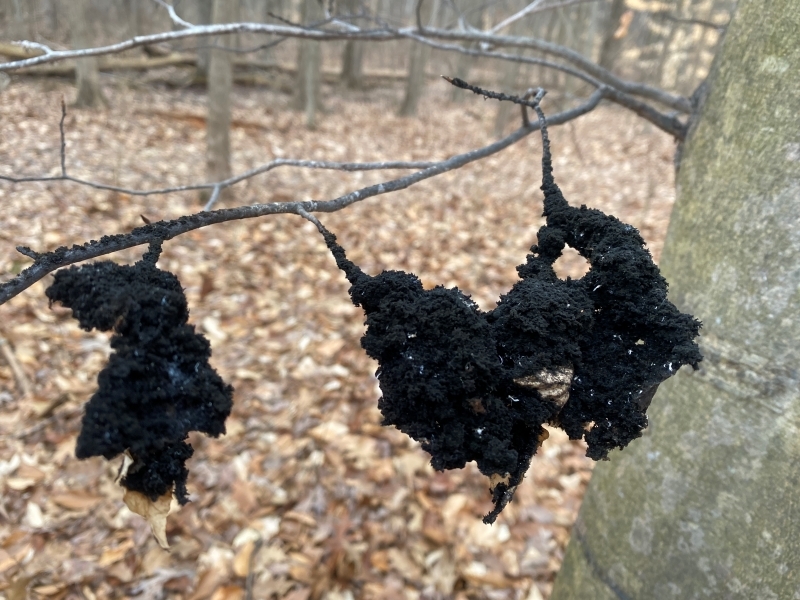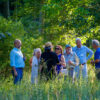
Supermassive Black Mold...Fungus
Posted on February 16, 2024
During our Scat and Tracks hike last Saturday, several small piles of a black, sooty substance on the ground kept grabbing our attention. We eagerly raced to examine each one, filled with hopes and dreams of putting our identification skills to good use. Could it be the scat we were so eager to find? Alas, each time we were left disappointed. “Not poop,” we chorused, dismayed.
Later in the hike, we noticed that the mystery substance was also present at eye level, coating several leaves and branches…more specifically, coating only the leaves and branches of American beech trees. “What is this stuff?” we wondered. We had some ideas, but no one was 100% sure. Based on our collective knowledge, we settled on it being some kind of mold or fungus related to aphids.
Well, after some educated guessing and research, we have our answer...and it's closer to being scat than we realized at the time!
Drumroll, please…
The mystery substance is Scorias spongiosa, a type of sooty mold fungus known as a “honeydew eater.” Sound appetizing? In this case, “honeydew” refers to aphid honeydew, the sugary, liquid waste (sort-of-scat!) aphids secrete as they feed on plant sap. Not so appetizing after all.
As we observed during the hike, S. spongiosa grows exclusively on American beech trees. It feeds on honeydew from one particular type of aphid: the beech blight aphid. Even if you’re not a bug buff, you might be familiar with beech blight aphids, nicknamed “boogie-woogie bugs” because of their unique appearance and tell-tale behavior.

As shown above, these aphids look like tiny little cotton balls and form huge colonies. They show up in droves around September, and you’ll know you’ve found them if you notice a beech tree with branches and leaves covered in what looks like fluff or even snow. They’re often called boogie-woogie bugs because when disturbed, they lift up their tiny abdomens in unison and thrash around in an attempt to ward off predators. (It’s not very threatening if you ask us. Take a look for yourself.)
While S. spongiosa is not the only kind of sooty mold fungus, it's unique in its size and notable appearance—in some cases, it can form thick masses as large as footballs. The reason for its dense, large form is directly related to those beech blight aphids and their behavior. Because the aphids form those colonies, the honeydew they leave behind coats broad swatches of the beech trees, causing the fungus to mimic the appearance of the aphids that came before it.
Isn’t that an awesome, full-circle moment!? If only everything in nature was so clearly connected and easy to remember…*sigh*
So, is it "bad"?
S. spongiosa has a somewhat shocking appearance, so it’s reasonable to wonder if its dense coverage harms beech trees. Luckily, sooty molds don’t penetrate leaves, and they are not parasitic. They can block photosynthesis in some severe cases, but they’re not known to cause any widespread damage and are not a reason to sound any alarms. Go forth and observe this funky fungus in peace!






















